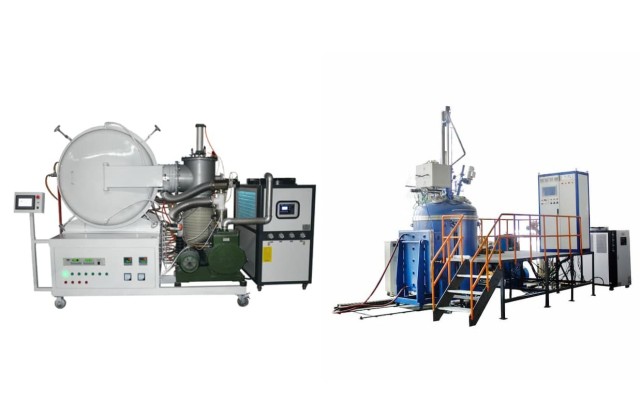Applications of laboratory vacuum furnaces
There are many industries that use laboratory vacuum furnaces for various applications. Some examples include the aerospace, automotive, and electronics industries. Vacuum soldering and brazing are often used in the aerospace industry to join metal components, while vacuum annealing is used to improve the strength and ductility of metals. Sintering is a process that is used to produce solid objects from powders by heating them to a temperature just below their melting point. This process is often used in the manufacturing of ceramics, metals, and plastics.
In addition to these applications, laboratory vacuum furnaces are also used for heat treatment processes such as hardening, tempering, and carburizing. These processes are used to alter the mechanical properties of metals and alloys, such as increasing their strength and wear resistance.
Overall, laboratory vacuum furnaces are versatile tools that are used in a wide range of industries and applications. Their ability to operate in a defined, non-oxidizing atmosphere and to use a variety of gases makes them suitable for many different types of heat treatment and research and development processes.
Requirements of laboratory vacuum furnaces
In addition to the power supply and vacuum pump, there are several other requirements that need to be met in order to run a laboratory vacuum furnace. These include:
- Gas supply: Depending on the application, various gases may be required to be supplied to the furnace. These gases could include hydrogen, nitrogen, and other specialized gases.
- Cooling water: Many vacuum furnaces generate a significant amount of heat during operation, and cooling water is often required to dissipate this heat and keep the furnace from overheating.
- Compressed air: Some vacuum furnaces may require a supply of compressed air to operate certain components or to assist with the evacuation of the furnace chamber.
- Exhaust hood: It is important to have an exhaust hood in the laboratory to safely remove any fumes or gases that may be produced during the vacuum furnace process.
In addition to these requirements, it is also important to have appropriate safety equipment and procedures in place when using a laboratory vacuum furnace. This could include fire extinguishers, safety glasses, and protective clothing. Overall, it is important to carefully follow all operating instructions and safety guidelines when using a vacuum furnace in a laboratory setting.
Difference between laboratory vacuum furnace and industrial vacuum furnace
In addition to size, there are several other key differences between industrial-scale and laboratory vacuum furnaces:
- Capacity: Industrial-scale vacuum furnaces are designed to handle much larger loads and volumes of material than laboratory vacuum furnaces. This makes them more suitable for large-scale production operations.
- Temperature range: Industrial-scale vacuum furnaces are typically capable of reaching higher temperatures than laboratory vacuum furnaces. This is because they are designed to handle the heat load of larger loads and higher production volumes.
- Control systems: Industrial-scale vacuum furnaces often have more advanced control systems that allow for precise temperature control and process monitoring. Laboratory vacuum furnaces may have more basic control systems that are suitable for smaller scale and less critical applications.
- Cost: Industrial-scale vacuum furnaces are typically much more expensive than laboratory vacuum furnaces due to their larger size and more advanced features.
Overall, while both industrial-scale and laboratory vacuum furnaces are used for vacuum heat treatment, they are designed for different applications and have different capabilities. Industrial-scale vacuum furnaces are more suitable for large-scale production operations, while laboratory vacuum furnaces are more suitable for smaller scale, research, and development applications.
Related Products
- Laboratory Vacuum Tilt Rotary Tube Furnace Rotating Tube Furnace
- Vacuum Induction Melting Spinning System Arc Melting Furnace
- Vacuum Heat Treat Furnace and Levitation Induction Melting Furnace
- Lab-Scale Vacuum Induction Melting Furnace
- Vacuum Hot Press Furnace Heated Vacuum Press Machine Tube Furnace
Related Articles
- Rotary Furnaces: Advanced Materials Processing and Applications
- CVD furnace for the growth of carbon nanotubes
- Materials Science with the Lab Vacuum Furnace
- Electric Rotary Kiln Pyrolysis Furnace: A Comprehensive Guide to Pyrolysis Technology
- Optimizing Industrial Processes: Rotary Kiln and Laboratory Furnace Solutions


















